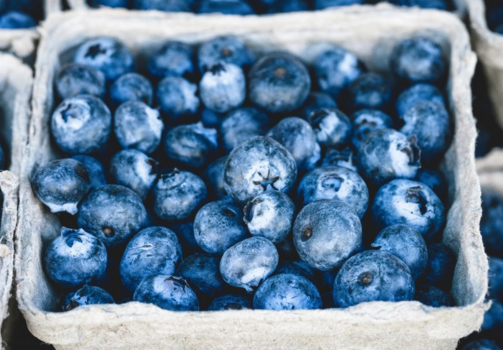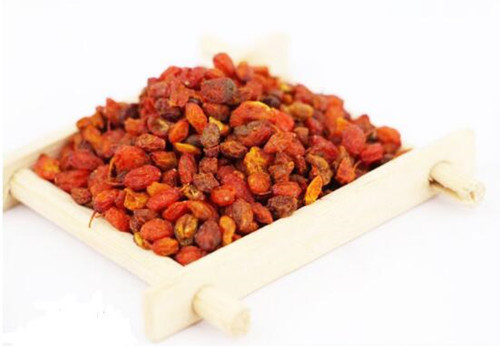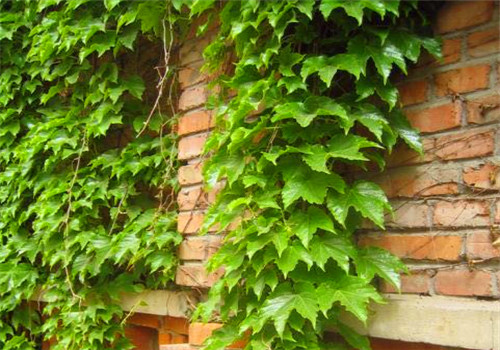What are the precautions for blueberry planting? How to increase output?
Blueberry is a shrub fruit, its nutritional value is high, taste pure, market demand is large, so blueberry planting what precautions? How to increase blueberry production?

I. Precautions for blueberry cultivation
1. Garden selection
Blueberry planting should choose the middle and lower parts of east slope and south slope, the slope is less than 30°, terrace should be built when the slope is large, and the garden should be built in the place with loose soil, fertile soil, good drainage performance, wet but no ponding as far as possible.
Blueberry growth needs strong acid soil conditions, the key to blueberry cultivation is soil improvement, adjust soil pH value to about 5, soil organic matter content is not less than 5%.
2. Variety selection
Middle and lower reaches of the Yangtze River: the land with strong soil viscosity is preferred to select the varieties with strong adaptability, such as Nanjin, Rabbit Eye Brilliant, Emerald, etc.
Southern humid and cool microclimate areas: can choose to plant some southern high cluster varieties such as mist, O'Neill, emerald, jewelry, etc.
Northern region: mainly north high-bush blueberries, it is recommended to plant north high-early large-fruit varieties Duke, or south high-early varieties O 'Neill, Mist, etc. in facilities.
Considering artificial, management and other factors, the continuous garden area should not be too large (recommended 100~300 mu), the variety should not be too many (2~3 varieties), in order to facilitate management.
3. Soil improvement
In order to thoroughly improve the soil environment for blueberry growth, it is recommended to thoroughly improve the soil and improve the whole garden.
In the autumn of the year before planting, the whole garden shall be deeply ploughed for more than 40~60cm, drainage ditch shall be dug, gentle slope shall be adjusted to gentle slope, and sulfur powder shall be applied. The specific dosage shall be determined according to the measured soil pH condition. In order to ensure uniformity, rotary tillage shall be applied twice.
Before rotary tillage, the input amount of materials per mu is about 5 cubic meters of peat, about 3 tons of organic fertilizer, 5~10cm of sawdust or bark with a diameter of 3~ 5 cm, and 30-50 cubic meters per mu.
In order to avoid nitrogen deficiency caused by sawdust, it is also necessary to add 15kg/mu urea or other types of nitrogen fertilizer together with sawdust. Ensure that all kinds of materials are mixed evenly with the garden soil, and the improved soil after ridging basically returns to the ridge.
4. Planting
Planting time: Blueberry planting in spring, autumn and winter can be, northeast late spring planting best.
Seedling selection: seedling height to 35~50cm is appropriate, there are more than 2~3 upright healthy branches, trunk branches healthy not aging, old and weak branches less, do not old seedlings. The root system is pale yellow, developed, not black, and without root disk phenomenon.
Planting method: When planting, dig planting holes on the ridge, the size is generally about 40×40×40cm. Add 5kg organic fertilizer and 30~ 50g compound fertilizer at the bottom as base fertilizer, mix with soil and mix well, and leave at the bottom. Cover with a layer of soil, then add some peat, pesticides and soil mixed evenly and left in the upper layer of the planting hole, ready for planting.
When planting, put the seedlings in the nutrient bowl into water in advance, soak them thoroughly, take them out of the bowl, shake open the root system slightly, dig a small pit of about 20cm×20cm on the dug planting hole, plant the seedlings, gently press them, and irrigate them thoroughly. Cover pine needles, rice stalks, sawdust and other moisture and acid, covering 15~30cm above the ground is appropriate.
After planting management: after planting irrigation fixed root water, water sinking after the root and ridge surface flush, can not be planted too deep or too shallow. Covering film to prevent weeds before they grow out, cutting crops in dormancy period after planting in autumn and winter, and cutting crops as soon as possible after planting in spring.
5. Fertilization management
Basal fertilizer: the most suitable application time is before autumn leaves change color, early application effect is better than late application. Generally, it is mainly composed of decomposed sheep dung, cow dung and rabbit dung, and is fertilized in the way of ditching. The trees in full fruit stage are 10~15kg/plant, and the young trees are 5kg/plant.
Topdressing: during topdressing period, quick-acting fertilizer is mainly used during leaf bud germination period, before flowering and after flowering. It is suggested to apply 300 times solution of Haijingling biological stimulant root application type in combination with spraying; after fruit picking, a small amount of phosphorus and potassium fertilizer can be applied to avoid excessive nitrogen fertilizer application causing excessive growth of young shoots, so as to promote root growth and strong branches.
6. Water management
Blueberry young fruit development period water supply should be sufficient and stable, avoid sudden dry and wet, otherwise it is easy to cause red fruit, fruit. When the drought time forecast exceeds 7 days, it is guaranteed to irrigate enough water once within 5 days, and the watering shall avoid the noon period when the outside temperature is high as far as possible.
Blueberry is more sensitive to waterlogging, so it must be drained in time. Blueberry waterlogging is not good for half a day. When building the garden, the irrigation facilities should be planned in combination with the local historical extreme flood weather, which is especially important in blueberry planting in the south flat land.
7. Weed management
Weedicide use is prohibited in blueberry gardens, all herbicides can cause phytotoxicity to blueberry plants or roots.
In production, in order to control weeds, straw, bark, sawdust, etc. are generally selected for ground mulching, which not only can control grass damage, but also has a good acid reduction effect after the covered plants rot and leach into the soil, which is conducive to maintaining the soil pH at a partial acid level. It can also increase soil organic matter and fertility, reduce nutrient deficiency, promote blueberry growth, increase yield and improve quality.
8. Trimming
Blueberry is a small shrub with many years of clustering. Its shaping and pruning are different from those of bulk fruits. The main method is to adjust the relationship between vegetative growth and fruiting, and regularly thinning weak branches, fruiting branches and aged branches.
Summer shear and winter shear are dominant in a year. Winter pruning: weak trees rejuvenate, strong trees control yield; summer pruning: strong trees densify and promote growth.
Young tree period: after planting seedlings are trimmed, the number of new branches increases. In summer, attention should be paid to timely topping, flower buds should be removed in time in the following year, and tree vigor should be cultivated early.
Initial fruiting period: normal growth of the initial fruiting trees, the results of the year generally leave 20~30 fruiting branches, you can get 0.5~1kg of yield, weak growth can withdraw most of the fruiting branches.
Full fruiting period: the task of pruning in this period is to maintain healthy tree vigor, reasonable load, generally retain 70~100 fruiting branches, so as to make it high and stable yield, high quality, and prolong the full fruiting period.
9. Flower and Fruit Management
Pollinating: Bees are released at the beginning of flowering, bumblebees are used in the facilities, and a box of bees (10,000 to 20,000 bees per box) is placed in about 5 mu of land in the open air.
Rain shelter in flowering and fruiting period in southern region: rainy areas in southern China have more rain during flowering and fruiting period, which may seriously affect fruit setting rate, fruit picking and quality. Rain shelter cultivation can be adopted, covering film in middle flowering period and removing film in tail fruit period.
Dry and hot wind at flowering stage in northern region: cold shed in northern region, drought and little rain at flowering stage in mid-April in open air, once high temperature weather is encountered, air humidity is often lower than 20%, blueberry corolla often shrinks and wilts, which has great influence on blueberry stamen pollen vitality and pistil stigma, resulting in poor pollination, so attention should be paid to watering and moistening.
10. Disease and pest control
Blueberry diseases and insect pests are few, common powdery mildew, downy mildew, etc.; pests are aphids, mites, fruit flies, longicorn, scarab, etc.
We should pay attention to prevention first, comprehensive control, protection and utilization of various natural enemies, maintain ecological balance in blueberry orchard, give priority to physical control and biological control, adopt chemical control when necessary, but use low toxicity, safe or biological pesticides, and pay attention to safe drug isolation period.
2. How to increase blueberry production?
1. Select improved varieties
There are many varieties of blueberries, including short bush blueberries and high bush blueberries, which are suitable for growing in cool areas as well as warm areas. At present, there are more than 20 varieties of blueberries available, so there are various varieties, among which rabbit eye blueberries are the easiest to feed. O'Neill is also a very good variety, especially suitable for planting in the southern part of our country. There are also some blueberries suitable for planting in the north. I won't cite them here. Choosing the right variety is the most basic way to increase blueberry yield, and the second is to suggest planting multiple varieties at the time of planting, so that yield and quality will be better.
2. Timely sowing
Blueberry planting is a suitable time, can not be planted casually, we will most often plant in the autumn from the end of August to September this time, this time for planting survival rate will be much higher, at the same time suitable for blueberry growth and development. Of course, it can also be planted in spring, but it is best to plant in early spring, so that blueberry wine can take root and sprout in this season, and wait until the flowering season to keep up with the rhythm.
3. Fertilizer and water management
After blueberry planting, we need to carry out reasonable fertilizer and water management according to the soil properties of planting. There are certain differences in fertilizer and water management in every growth period of blueberry, and there are also differences in management of every variety. Under normal circumstances, fertilizer shall be applied twice in seedling stage. Blueberries with higher plants shall be topdressed by digging ditches, while those with shorter plants shall be applied as long as they are planted, and farm manure or organic fertilizer shall be used mainly each time. After the blueberry bears fruit, apply fertilizer again on the basis of these two times, mainly foliar fertilizer, which is used to promote the growth of fruit. In the future, it is necessary to spray foliar fertilizer once every two or three months, which can make blueberry seedlings grow better and avoid premature aging and yield reduction.
4. Field management
Field management first needs to talk about pollination matching of blueberry planting. Each plant must be planted according to a four-to-one mode, which can increase the probability of pollination and thus improve the fruit setting rate. The second is to thin the blueberry seedlings in the field, remove the weaker branches and leaves, and it will grow new branches again. After a certain number of years, it is necessary to cut off all the old branches and let them send out new branches, which means new birth. Then, it is necessary to keep the seedlings warm every winter, otherwise the blueberry seedlings will be frostbitten, and the flowering period needs to be controlled and the fruits controlled after the flowers fall. The way of controlling flowers and fruits is to keep the good and large ones. The last is field cleaning. Weeds, sundries, fallen leaves, dead branches, etc. need to be cleaned up and burned into ashes with fire to avoid virus infection.
5. Artificial pollination
Artificial pollination is also a way to improve yield, but it will not be used under normal circumstances. We will be more inclined to match pollination trees well. The pollination success rate is very high under stable weather conditions. Of course, we do not rule out some other situations. Therefore, we need to use artificial pollination methods. One can also borrow external forces, such as putting bee colonies into gardens for bee pollination, or collecting pollen for pollination. Finally, you can also pick the male flowers directly and then smear the pollen of the male flowers on the female flowers and then cover the female flowers with the male flowers for pollination. These are some methods of artificial pollination, which can also be used when necessary, which is also very helpful to improve the yield of blueberries.
Time: 2019-04-06 Click:
- Prev

What are the effects and effects of Hippophae rhamnoides in Elaeagnaceae? How can I eat it well? Can you treat skin diseases?
Hippophae rhamnoides is a plant of the genus Hippophae rhamnoides of Elaeagnaceae. The roots, stems, leaves, flowers and fruits of Hippophae rhamnoides have good medicinal value. Ancient Tibetan medicine in China regarded the fruit of Hippophae rhamnoides as a common medicine for the treatment of diseases. What are the efficacy and effects of Hippophae rhamnoides? How can I eat it well? Brief introduction of Hippophae rhamnoides
- Next

How to plant "flying centipede" Parthenocissus? What are the pros and cons? Will it destroy the wall?
Parthenocissus, also known as the flying centipede, is a kind of green plant with the characteristics of beauty, medicine and environmental protection, so how to plant Parthenocissus? What are the pros and cons? Will it destroy the wall? What is the price of Parthenocissus seedlings? The seedling price of Parthenocissus is not expensive and there are many discounts if you buy more
Related
- Fuxing push coffee new agricultural production and marketing class: lack of small-scale processing plants
- Jujube rice field leisure farm deep ploughing Yilan for five years to create a space for organic food and play
- Nongyu Farm-A trial of organic papaya for brave women with advanced technology
- Four points for attention in the prevention and control of diseases and insect pests of edible fungi
- How to add nutrient solution to Edible Fungi
- Is there any good way to control edible fungus mites?
- Open Inoculation Technology of Edible Fungi
- Is there any clever way to use fertilizer for edible fungus in winter?
- What agents are used to kill the pathogens of edible fungi in the mushroom shed?
- Rapid drying of Edible Fungi

